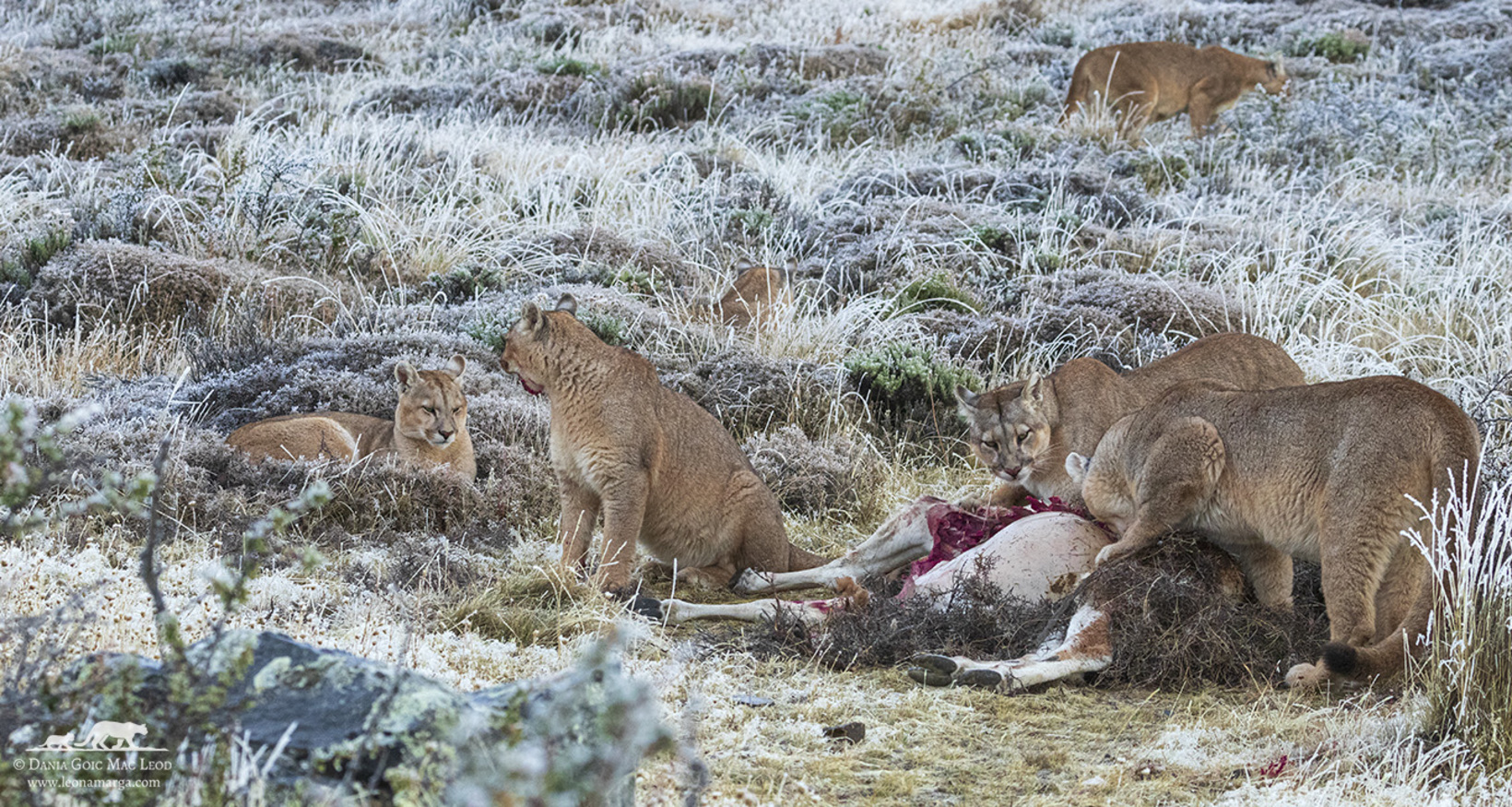The story of the interaction between pumas and livestock in Patagonia starts at the
end of the XIX century, when the sheep farming industry started with the arrival of
1.200 sheep introduced from the Malvinas Islands. But the development this new
industry required space. Back then, Patagonia was mostly a wild place, with
forests, steppes and mountains where wildlife was abundant everywhere. So
farmers started to use those wild places to raise their livestock, replacing places
formerly inhabited by local wildlife. Guanaco numbers decreased dramatically,
being hunted because of their competence with livestock. With less preys to eat
and with people and livestock living closer to their territories, the pumas started to
prey on a new food: sheep. And this led to a conflict who remains until today.
The usual way to deal with puma predation on livestock was (and is still today)
hunting them. The persecution of pumas was left in hands of the so-called
leoneros, specialist in tracking and hunting the cats with the help of trained dogs.
Usually every ranch had its own leonero, if not, was easy to find and hire one of
them to do the job. On this way the ranchers tried to keep pumas away from their
business. This story repeats itself all around the distribution of the puma, changing
the environment or the livestock, but the solution of the equation is quite the same:
to hunt the one who is behind their losses.
But almost a century later, something changed on the way some of the ranchers
saw the pumas. The month of August of 1995 left a deep wound in people living in
Patagonia. A white curtain covered the region for several days. The snow storm,
accompanied with low temperatures and strong winds was the worst combination
for both local people and animals. Twenty-five years have passed since the so
called “white earthquake”, a climatic event who took more than 176.000 sheep and
the dreams of many ranchers in Patagonia. Many of them lost everything and had
to sell their lands, earning their livelihood through an activity different than livestock
raising.
Despite this tragic episode, the Estancia Laguna Amarga was one of the ranches
who decided to keep in the business. The rooting of Goic family to their land was
stronger than anything, so against all odds, decided to stay in the area. And with
less pressure on the land due to a decrease on livestock numbers, local wildlife
(including pumas) found their opportunity to roam on their territory again.
The puma populations found a place, together with Torres del Paine National Park,
where they would be able to live without being chased by humans. Their numbers
started to grow, every year was more easy for people to see them, and somehow,
they were not afraid of people anymore. On both the park and the estancia the
pumas weren’t persecuted anymore so the humans stopped being a threat. Today
there are hundreds of tourists who are coming to the park and the Estancia to see
and photograph this magnificent species, a unique area to spot pumas in the world.
The arrival of this new business brought a new hope for local pumas. Now other
estancias are starting to look with different eyes at pumas, stopping to see them as
the hated ones, and hopefully, to help on their conservation.
But there’s still a lot to do. Tourism with pumas is a delicate business and it needs
to be done responsibly. There’s a lot to learn, many mistakes to be repaired and
things to learn. Estancia Laguna Amarga is actually working on them, developing
safety protocols for both pumas and people. Responsibility and respect are the key
when working with wildlife. Inevitably our presence on their habitats somehow
interfere, but our goal should be to remain (almost) invisible, allowing them to
behave naturally and without threats. If done in a safe and responsible way, tourism
can be the key to unlock the gate for pumas to their natural habitat, so they could to
roam free and wild once again.
